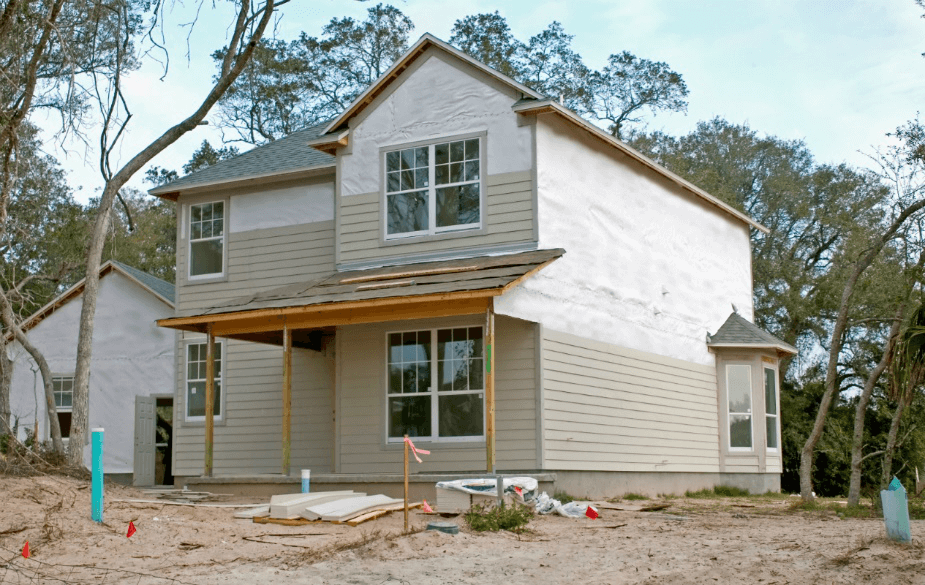How We Make a Better House Wrap

House wrap, also known by the genericized trademark home wrap, generally denotes a synthetic material used to protect buildings. House wrap functions as a weather-resistant barrier, preventing rain from getting into the wall assembly while allowing water vapor to pass to the exterior. If moisture from either direction is allowed to build up within stud or cavity walls, mold and rot can set in and fiberglass or cellulose insulation will lose its R-value due to heat-conducting moisture. House wrap may also serve as an air barrier if it is sealed carefully at seams.
House wrap is a replacement for the older asphalt-treated paper, or asphalt saturated felt. These materials are all lighter in weight and usually wider than asphalt designs, so contractors can apply the material much faster to a house shell.
House wrap must be both water shedding and have a high moisture vapor transmission rate (MVTR) to be effective. It must also take handling abuse during installation and be resistant to UV. House wrap is often left exposed for some time after construction, awaiting exterior siding installation. The original asphalt paper design, while heavy and slow to install, is still a contender. It can be nailed and abused during installation and still function. Some new designs must be installed carefully or they will slightly rip or tear during installation, possibly allowing for water infiltration at the damaged areas. Most newer designs do not “seal” well against nails or staples like asphalt products.
House wrap is installed over the sheathing and behind the exterior siding. Siding can be vinyl, wood shingles or shakes, brick facade, or numerous other acceptable building materials. In all cases, the house wrap is the last line of defense in stopping incoming water or exterior water condensation from getting into the wooden stud wall.
PP/PE woven ShiningWrap defense the wall against bad weather, mildew. Its waterproofing, energy efficient, and highly permeable. Durability and High breathability are the most important emblems for ShiningWrap.
Starting from extrusion, we take a good care of every single yarn by ever-tuning the drawing/annealing ratio towards the optimization.
Ensued with advanced weaving looms to make the weaving tense on the scrim just right before it undergoes the heat during DIE-COATING. Meanwhile the special designed cooling system makes sure the surface smooth after coating. Not just a stable shrinkage rate but also a better tensile.
A good perforation makes sure a highly breathability comes along after printing.
LAST: To get you covered




 Most professional Roofing Membrane & Wall Wrap Manufacturer.
Most professional Roofing Membrane & Wall Wrap Manufacturer.

 Certified Company ISO9001:2015
Certified Company ISO9001:2015
